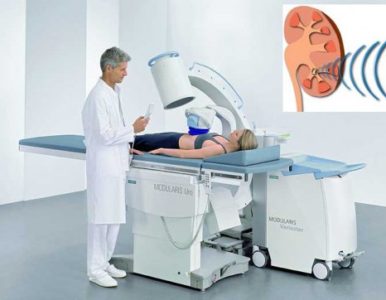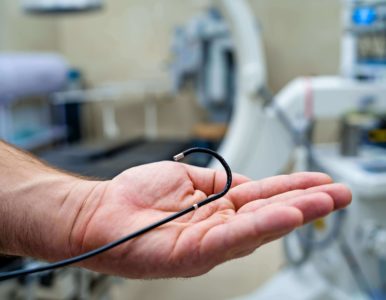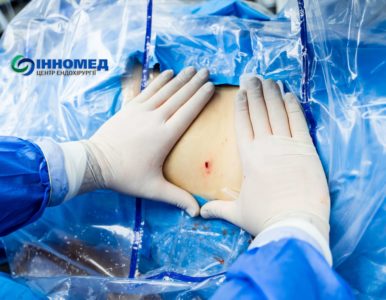LITHOTRIPSY
The treatment is aimed at breaking up and spontaneous passage of stone or removing it from the body through the urinary tract or minimal punctures.
Remote lithotripsy.
Optimal size – smaller than 1 cm. Optimal location - the upper third section of the ureter.
Laser lithotripsy through the urinary tract.
Optimal size - smaller than 2 cm. Location is not significant.
The past 10 years have revolutionized the process of urolithiasis (KSD) treatment.
The advanced video and optical systems allow urologists to deliver instruments to any part of the urinary system for ultimate image capabilities.
The size of tools for entering the urinary system has decreased several times, and most importantly, they have become flexible, which significantly reduces the trauma to patients. However, to enter and see the calculus in the kidney using the thinnest tool is only the first stage, as the main goal is to break it down to the smallest fragments in the shortest time possible.
Widely used for treatment of urolithiasis, ultrasound or pneumatic methods of concrement destruction are mechanical ones and therefore require bringing of a sufficiently thick electrode to the stone that can be only straight-shaped, thus greatly limiting the capabilities and work field for a surgeon.
The laser technique opened up the new possibilities for depriving patients of renal calculi.
All above mentioned has led to the emergence of a completely new direction in the treatment of KSD – a retrograde intrarenal surgery.
Retrograde means that a surgeon can enter any part of the kidney through the urinary tract, yet in the direction opposite to urine flow – from the outer opening of the urinary tract to the farthest renal calyx. Having it done and reaching the stone, a surgeon can use the laser beam and break it up into a number of fragments of minimal size. The flexibility and the smallest possible diameter (modern laser fibers are 0.15 to 0.9-mm-thick) of the operating piece gave a powerful impetus and opened incredible opportunities for contact destruction of stones in kidneys, ureter and bladder.



